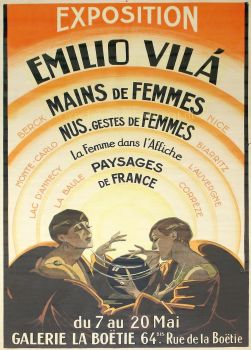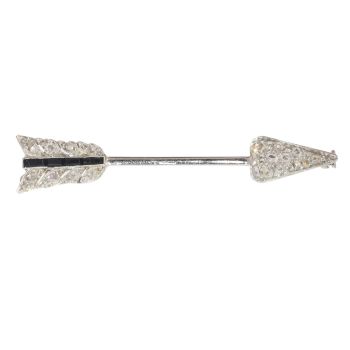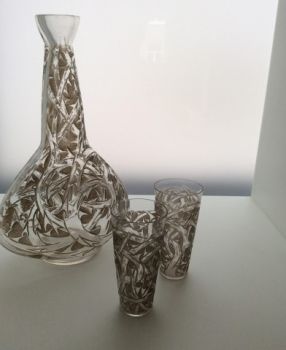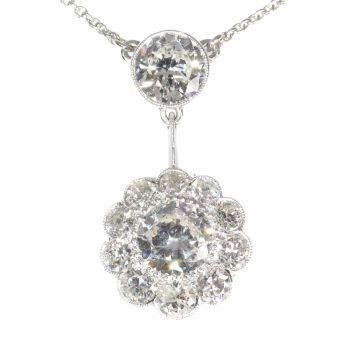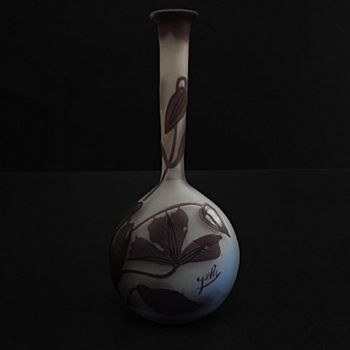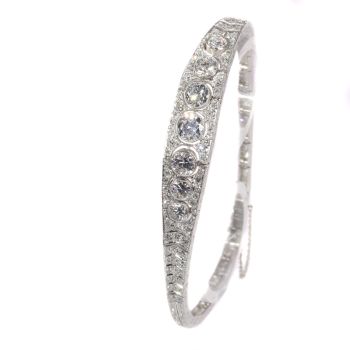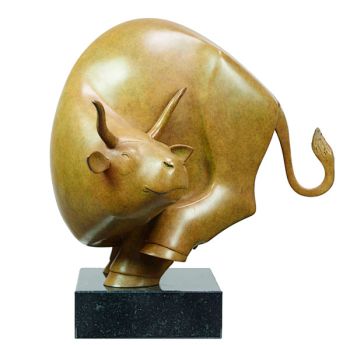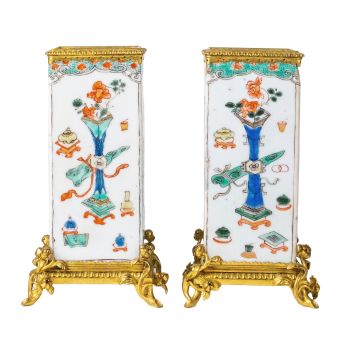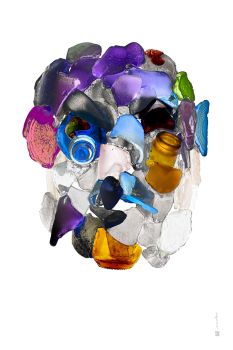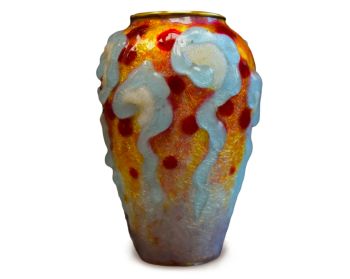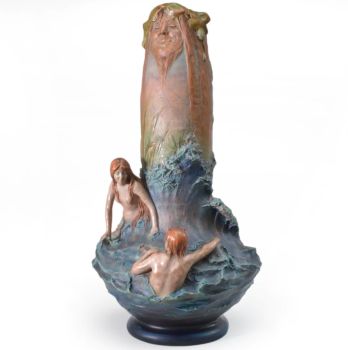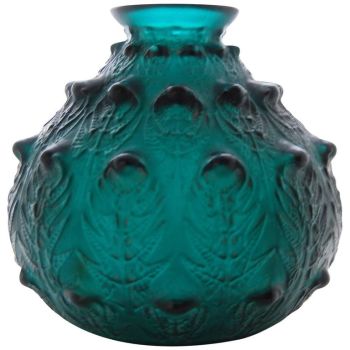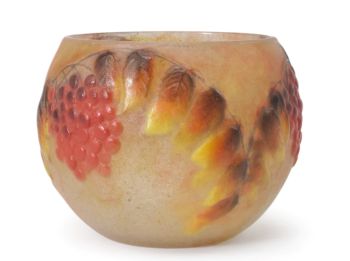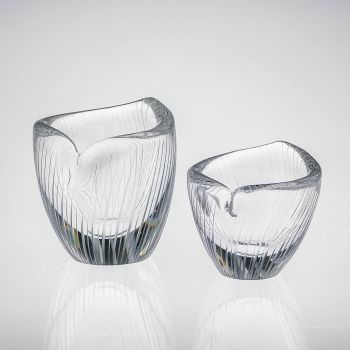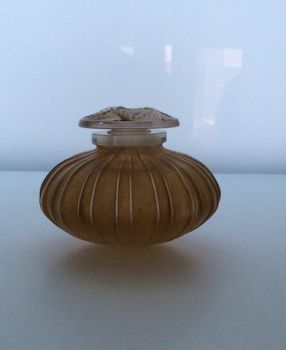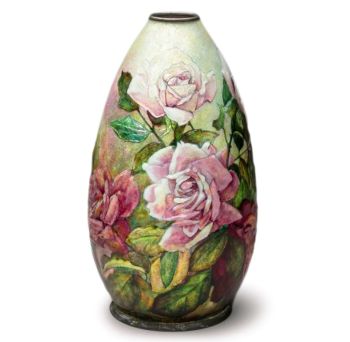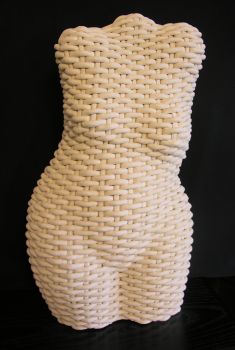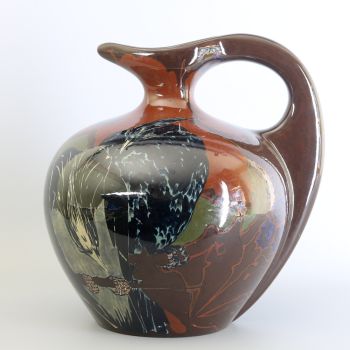Otto Prutscher
Biography1880 - 1949
About the artist
Otto Prutscher (1880, Vienna – 1949, Vienna) was an Austrian architect and designer. After training at the Fachschule für Holzindustrie in Vienna, he studied at the Kunstgewerbeschule, from 1897 to 1901, under Josef Hoffmann, who would become a Director of the Wiener Werkstätte (Vienna Workshop). At the turn of the century, a number of avant-garde Viennese designers made an abrupt switch from the flowing organic lines of Jugendstil and Art Nouveau to a strict yet vigorous geometry. In 1903, these designers banded together to form the Wiener Werkstätte, a designers' cooperative under the direction of the noted architect and designer Josef Hoffmann. Founded on the principles of the Arts and Crafts movement, the Wiener Werkstätte strove to provide a range of well-designed, often handmade products for a sophisticated audience and indeed could supply everything from an architectural setting to the smallest decorative accessory.
Outside manufacturers were frequently used to produce and distribute designs that the Wiener Werkstätte was unable to realize in their own studios. By the early 1920s the Wiener Werkstätte had opened branches in Paris, Zurich, and New York. Influenced by Hoffmann, Prutscher frequently used geometrical and square forms in his early works. Later he applied more classical and indigenous motifs. In 1900, he participated in the 'Exposition Universelle et Internationale' in Paris, and in the same year he settled as an architect in Vienna. In 1902, he exhibited at the 'Esposizione Internationale d'arte Decorativa Moderna' in Turin. From 1903 to 1909, Prutscher was a teacher at the Graphische Lehr- und Versuchsanstalt in Vienna, and afterwards he taught drawing at his former school, the Kunstgewerbeschule. From 1907 onwards, he produced glassware, textile, furniture, hard covers, metalware, silverware and jewellery, and designed for German companies such as Bakalowits, Loetz, Ludwig Hermann, Chwala, Lobmeyr and Thonet. Prutscher also was attached to Keramos, the Wiener Kunst- Keramik und Porzellanmanufaktur, where several famous artists worked, amongst others the sculptors Klablena and Klieber. Besides his activities as designer, Prutscher went on working as an architect.
Outside manufacturers were frequently used to produce and distribute designs that the Wiener Werkstätte was unable to realize in their own studios. By the early 1920s the Wiener Werkstätte had opened branches in Paris, Zurich, and New York. Influenced by Hoffmann, Prutscher frequently used geometrical and square forms in his early works. Later he applied more classical and indigenous motifs. In 1900, he participated in the 'Exposition Universelle et Internationale' in Paris, and in the same year he settled as an architect in Vienna. In 1902, he exhibited at the 'Esposizione Internationale d'arte Decorativa Moderna' in Turin. From 1903 to 1909, Prutscher was a teacher at the Graphische Lehr- und Versuchsanstalt in Vienna, and afterwards he taught drawing at his former school, the Kunstgewerbeschule. From 1907 onwards, he produced glassware, textile, furniture, hard covers, metalware, silverware and jewellery, and designed for German companies such as Bakalowits, Loetz, Ludwig Hermann, Chwala, Lobmeyr and Thonet. Prutscher also was attached to Keramos, the Wiener Kunst- Keramik und Porzellanmanufaktur, where several famous artists worked, amongst others the sculptors Klablena and Klieber. Besides his activities as designer, Prutscher went on working as an architect.





